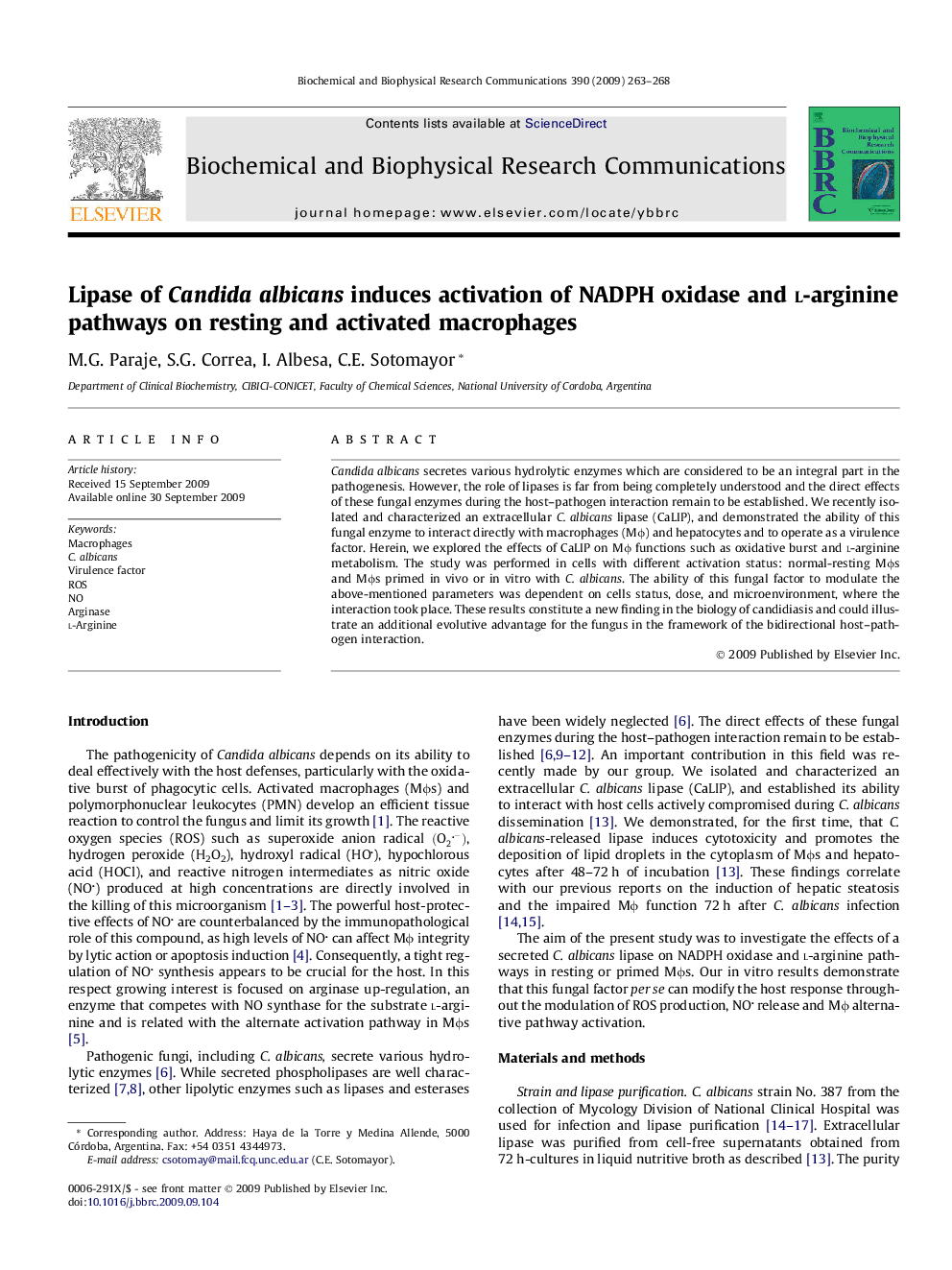| Article ID | Journal | Published Year | Pages | File Type |
|---|---|---|---|---|
| 1932761 | Biochemical and Biophysical Research Communications | 2009 | 6 Pages |
Candida albicans secretes various hydrolytic enzymes which are considered to be an integral part in the pathogenesis. However, the role of lipases is far from being completely understood and the direct effects of these fungal enzymes during the host–pathogen interaction remain to be established. We recently isolated and characterized an extracellular C. albicans lipase (CaLIP), and demonstrated the ability of this fungal enzyme to interact directly with macrophages (Mϕ) and hepatocytes and to operate as a virulence factor. Herein, we explored the effects of CaLIP on Mϕ functions such as oxidative burst and l-arginine metabolism. The study was performed in cells with different activation status: normal-resting Mϕs and Mϕs primed in vivo or in vitro with C. albicans. The ability of this fungal factor to modulate the above-mentioned parameters was dependent on cells status, dose, and microenvironment, where the interaction took place. These results constitute a new finding in the biology of candidiasis and could illustrate an additional evolutive advantage for the fungus in the framework of the bidirectional host–pathogen interaction.
